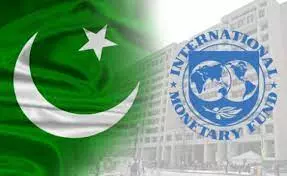Hong Kong March 4 2024: Shehbaz Sharif’s return as prime minister increases Pakistan’s chances of securing a new aid package from the International Monetary Fund after the existing program ends in April, states Bloomberg Economist Ankur Shukla in its report.
The country needs the assistance to avoid default and pay for imports. With more aid, a recovery in growth could be on the horizon. But the political situation will remain challenging for Sharif given the wobbly foundation of his coalition government. Its survival depends on support from Pakistan Peoples Party (PPP) — which could waver if public discontent becomes too strong. Another risk is that political uncertainty deters inbound investment. These could hurt the growth outlook. • Pakistan’s National Assembly elected Sharif as the new prime minister on March 3. His party — Pakistan Muslim League (PML-N) —joined hands with PPP to keep Imran Khan’s Pakistan Tehreek-e-Insaf (PTI) out of power.
Sharif is expected to be sworn in on Monday, beginning his second stint as the prime minister.
There are two reasons Sharif’s election as leader raises the chances of securing IMF aid. First, the previous government he led from April 2022 to August 2023 implemented IMF terms under the last bailout program. He also managed to secure the current nine-month stand-by deal with the IMF just before leaving the office.
Second, economic targets in his party’s election manifesto — including the fiscal deficit and current account balance — are either aligned with the IMF targets or, in some cases, even more ambitious. Convergence of the targets should facilitate the deal negotiation process.
An ImF deal is critical to avoid default and encourage friendly 000000 00 unlock additional assistance. Pakistan needs about $26 billion on average every fiscal year from 2025 through 2028 to pay its external debts and buy imports. Its FX reserves stand at around $7.9 billion as of Feb. 23.
But the terms of the IMF assistance are likely to be stringent. Winning public support for increases in taxes and energy prices — which would likely be required under a new IMF program — will be a difficult task, especially as Khan’s supporters are likely to continue protests against alleged vote rigging in the elections.
Khan-backed candidates winning more seats than either of the two major parties in Sharif’s coalition shows public disillusionment with PAL-N and PPP. Sharif will have shard time carrying out strict IMF conditions without triggering social unrest. A “misery index” — a combination of the jobless and inflation rates — hit a record high in fiscal 2023.
Any social turmoil could force the military to take the matter in its own hands and remove Sharif.
It is unclear how long the PML-N and PPP coalition will survive. PPP is supporting Sharif’s government from the outside without taking any ministerial posts. That strategy may shield PPP from a public backlash when the government takes unpopular decisions. The risk is that PPP withdraws its support — resulting in a downfall of the government.
All of this means uncertainty is extraordinarily high and downside risks to our growth outlook considerable. Ale project GDP will grow 3.5% on average between fiscal 2024 and 2026. The IMF’s estimate is 3.3%.










